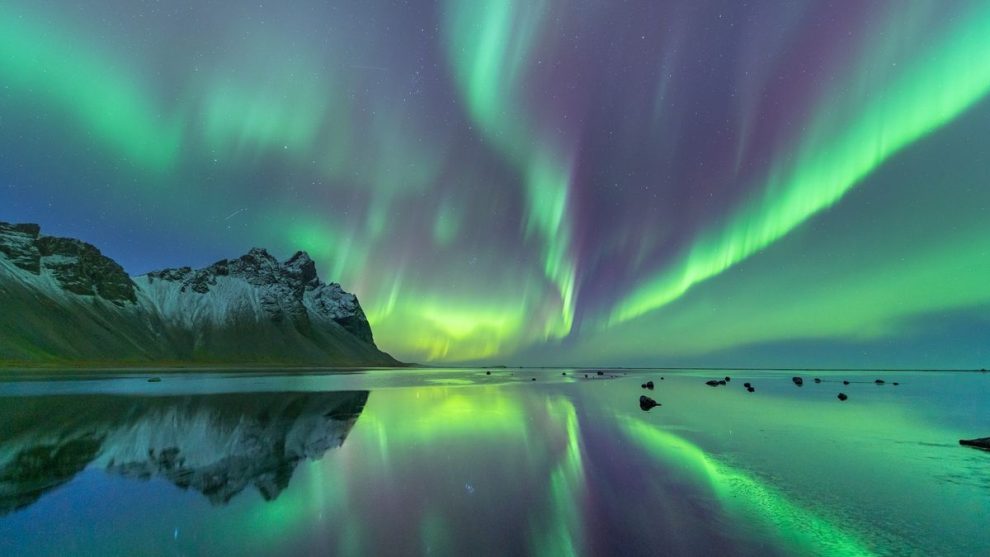KP Index: Your Key to Aurora Visibility
While the auroral oval defines the geographical zone, another crucial factor to consider is geomagnetic activity. This activity is measured by the Kp-index, ranging from 0 (minimal) to 9 (extreme). Generally, higher Kp-index readings indicate a stronger chance of seeing the Northern Lights. Ideally, you’ll want to target locations with a Kp-index of 3 or above for a good possibility of witnessing the aurora.
Seasonal Variations: Prime Time for Aurora Chasing
The Northern Lights are most visible during the equinoxes (fall and spring) when the day and night skies are more balanced. This provides longer viewing opportunities during darkness. However, keep in mind that weather conditions also play a significant role. Clear skies are essential for unobstructed views of the aurora.
Here’s a breakdown of prime aurora viewing seasons across different locations:
- Alaska: Aurora borealis season stretches from late August to April, with peak activity around the equinoxes.
- Canada: Similar to Alaska, the best time to chase the aurora in Canada is from late summer to mid-spring.
- Iceland: The Land of Fire and Ice offers excellent aurora viewing opportunities throughout the winter months (September to April) due to the long stretches of darkness.
- Greenland: While geographically challenging to reach, Greenland offers breathtaking aurora displays during the winter months due to its location deep within the auroral oval.
- Scandinavia (Norway, Sweden, Finland): The Scandinavian region boasts long winter nights and a good location within the auroral oval, making September to April prime viewing time.
Planning Your Aurora Adventure: Essential Tips for Success
Beyond location and timing, here are some additional tips to maximize your chances of witnessing the Northern Lights:
- Escape Light Pollution: City lights significantly hinder your view of the aurora. Seek out remote locations with minimal light pollution for optimal viewing.
- Weather Watch: Always check the weather forecast before your trip. Clear skies are essential for seeing the aurora.
- Dress for the Conditions: Temperatures can drop significantly, especially in Arctic regions. Pack warm clothes, waterproof gear, and sturdy boots.
- Photography Tips: If you plan to capture the aurora, consider using a camera with manual controls, a sturdy tripod, and a remote shutter release.
- Patience is Key: The aurora borealis is a natural phenomenon, and sightings aren’t guaranteed. Be patient, stay bundled up, and enjoy the clear night sky, even if the aurora is shy.
Join the Chase: Organized Tours or Independent Exploration?
There are two main ways to approach your aurora borealis adventure:
- Organized Tours: Many tour operators specialize in aurora borealis viewing trips. These tours often take you to remote locations with minimal light pollution and provide guidance from experienced guides who understand the best viewing spots and weather patterns.
- Independent Exploration: For the adventurous traveler, planning your own trip allows for more flexibility and customization. However, it requires thorough research on locations, weather forecasting, and understanding how to navigate unfamiliar territory.
Responsible Aurora Chasing: Respecting the Environment
As with any travel adventure, it’s crucial to be a responsible visitor. Minimize your impact on the environment by following local regulations, packing out all trash, and respecting wildlife.
Beyond the Lights: Embrace the Local Culture
While the aurora borealis is the main draw, consider incorporating local experiences into your trip. Sample regional cuisine, explore historical sites, or participate in winter activities offered by your chosen destination.
Witnessing the Northern Lights: An Unforgettable Experience
The Northern Lights are a truly awe-inspiring natural phenomenon. By understanding the science behind them, planning your trip strategically, and following these tips, you’ll maximize your chances of experiencing this breathtaking celestial display. Whether you choose an organized tour or an independent adventure, witnessing the aurora borealis is sure to be a memory you’ll cherish forever.
















Add Comment